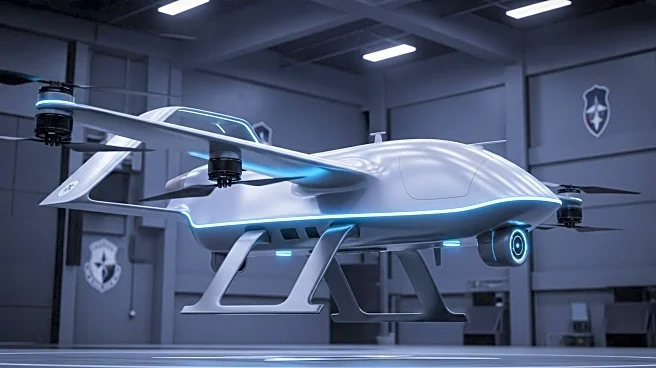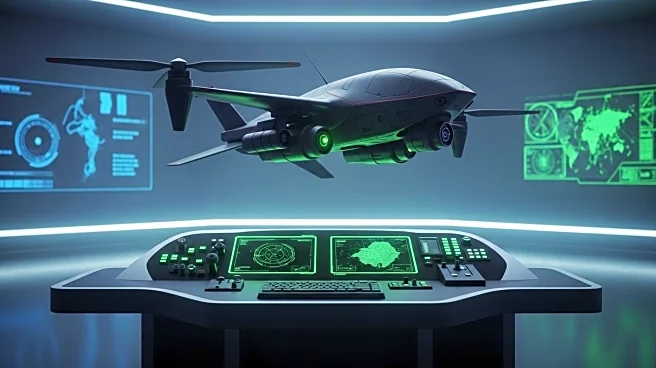What's Happening?
The U.S. Army is conducting a comprehensive assessment of supply chain risks to expedite the delivery of the Future Long-Range Assault Aircraft, the MV-75, by fiscal year 2027. Brig. Gen. David Phillips, the program executive officer for Army aviation, emphasized the importance of energizing the supply chain to meet accelerated timelines. Textron's Bell, which won the contract in late 2022, is tasked with building the aircraft, overcoming competitors Lockheed Martin's Sikorsky and Boeing. The Army plans to complete the critical design review phase by 2026 and ramp up hardware production thereafter. The MV-75 program is leveraging digital design and technology demonstration efforts to mitigate risks, with the V-280 Valor tiltrotor having flown over 200 hours. The Army is also establishing a training base, with the U.S. Marine Corps delivering an MV-22 tiltrotor to Fort Rucker, Alabama, for aviator training.
Why It's Important?
The acceleration of the MV-75 aircraft program is crucial for enhancing the U.S. Army's aviation capabilities, particularly in long-range assault operations. By addressing supply chain risks, the Army aims to ensure timely delivery and operational readiness, which is vital for maintaining strategic advantage. The program's success could influence future procurement strategies, emphasizing the role of digital design and technology demonstrations in reducing risks. The initiative also highlights the importance of collaboration between military branches, as seen with the Marine Corps' involvement in training. The MV-75's development is expected to bolster the defense industry, particularly Textron's Bell, and could set a precedent for future military aviation projects.
What's Next?
The Army plans to complete the critical design review phase by 2026, followed by increased hardware production. Bell is already producing parts and has decided to manufacture the aircraft's fuselage in-house in Wichita, Kansas. The training base at Fort Rucker will continue to develop, with Army aviators learning on simulators and flying the MV-22 tiltrotor. The Army remains committed to meeting all defined requirements without compromising safety or performance. As the program progresses, stakeholders will closely monitor supply chain dynamics and technological advancements to ensure successful delivery and integration of the MV-75 into operational units.
Beyond the Headlines
The MV-75 program underscores the evolving nature of military procurement, where digital design and technology demonstrations play a pivotal role in risk management. This approach may influence broader defense acquisition strategies, promoting efficiency and innovation. The collaboration between the Army and Marine Corps reflects a growing trend of inter-service cooperation, which could enhance joint operational capabilities. Additionally, the program's focus on maintaining stringent requirements highlights the military's commitment to safety and performance, setting a standard for future projects.












